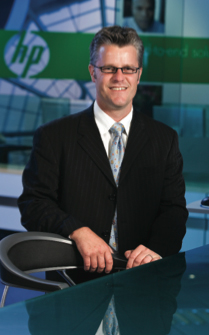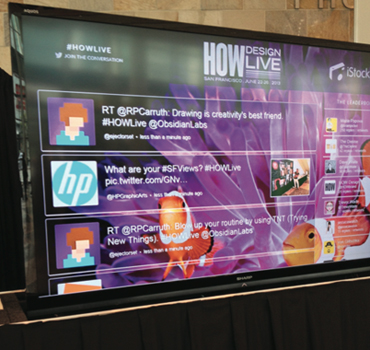In 2014 we'll be asking a number of vendors about what they’re doing to help educate possible would-be users of wide-format print about its potential. For this first report we put the question to Simon Addinall, market development manager EMEA, HP.
Print service providers have not been alone in facing the choices and challenges that rapid changesin printing technologies have brought - they have been felt along the entire length of the supply chain, from the brand managers, designers and marketers, to distribution companies.
Helping brands and creatives to not only understand new print production capabilities, but to find practical, profitable ways of using them, is a challenge. As marketing functions have changed and social media exploded, younger marketers and designers tend to be focused on (and more comfortable with) electronic digital media so there’s something of an uphill struggle to break through often outmoded perceptions of what print is about, and all it can deliver.
But there are ways of breaking down the barrier between the ‘new’ and ‘old’ media perceptions, usually by focussing on digital print’s main advantages like on- demand, versioning and personalisation. And, ultimately, the loop between the virtual and the physical can be closed through the inclusion of things like augmented reality, using, for example, HP Aurasma technology. Incorporating invisible codes in printed images can provide consumers with access to more information, videos or 3D virtual tours to give consumers a new interactive shopping experience.
But how do you get to the point where you can explain all that to the people who matter? HP supports PSP’s own efforts with a variety of regional and country events. These include open houses or conferences with, for example, HP Media Partners, involving PSPs, suppliers and end-users.
Roundtable discussions may be used to bring together leading players to discuss sector issues, design, marketing, print, media and business development. Sometimes events for market sectors are organised by PSPs themselves, with help from local HP teams. These might focus on an advertising organisation, or other target market.
 On a larger scale, HP, working directly with organisations around the world in markets covering HP’s digital printing solutions, participates in events for brand owners and agencies (BOA). For example, in May 2013, agencies from the UK and Germany (including members of GWA, the German Association of Communications Agencies), gathered in Barcelona for an ‘Art of Innovation’ conference featuring expert presentations and demonstrations of HP solutions for each segment.
On a larger scale, HP, working directly with organisations around the world in markets covering HP’s digital printing solutions, participates in events for brand owners and agencies (BOA). For example, in May 2013, agencies from the UK and Germany (including members of GWA, the German Association of Communications Agencies), gathered in Barcelona for an ‘Art of Innovation’ conference featuring expert presentations and demonstrations of HP solutions for each segment.
In the spring of last year, HP also launched a project with Adweek with articles, pictures and links to videos showing how major brands had run successful campaigns using digital print. In June, HP participated in HOW 2013, in San Francisco, which attracted 3,000 graphic designers, in-house managers, creative freelancers and package designers. And in October, HP Sponsored the Canadean Beverage Packaging Conference, in Brussels, which covered topics ranging from design and innovation, sustainability and the marketing of new products.
Other initiatives involved working with leading figuresin their fields: Magnum Photos photographers, or interior designers, like Karim Rashid, who designed the HP lounge at Heimtextil, in Frankfurt using wall coverings and textiles printed on HP Latex printers.
HP also generates case studies demonstrating best practice, innovation and the capabilities of its presses and printers for use by sales teams, magazines, and for distribution at events and online.
HP’s online presence both in social media and on YouTube has been another important part of the initiative to reach the design and marketing community. These range from informative and imaginative videos of applications, to showing designers and consumers how solutions like HP WallArt can enable the custom-design of wall coverings for specific environments.
Everything in this process is based on moving targets: the technologies develop; marketing methods evolve; the economy fluctuates. The thing to remember is that initiatives to reach marketing and design decision makers need to be ongoing, and utilise many of the same strategies used by the brands themselves. It’s when we communicate using the techniques and language they understand best, that our messages are met with the greatest success.
The Think Bigger Report is now available to read online here.
{jathumbnail off}


